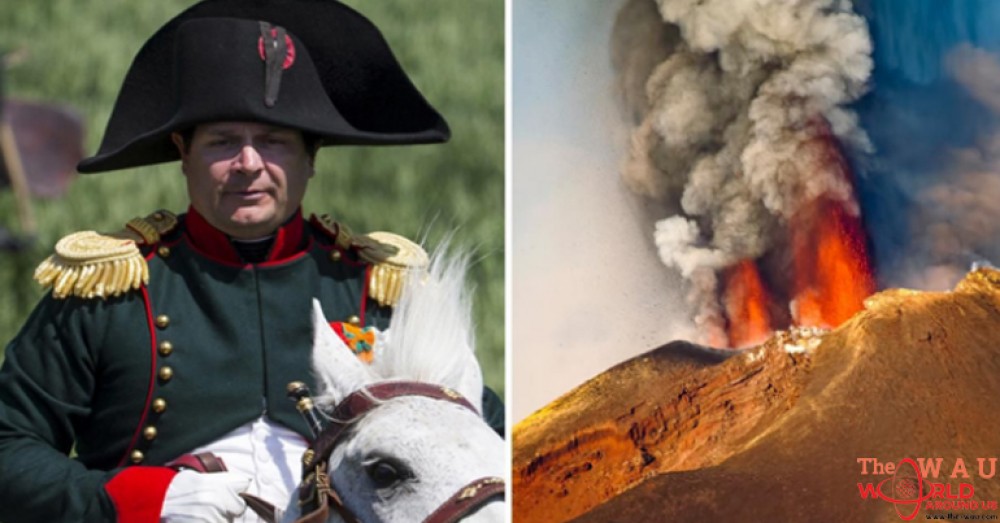A devastating volcanic eruption on the other side of world contributed to Napoleon’s defeat in the Battle of Waterloo, scientists say. Fascinating new research released Wednesday makes a remarkable link between to two events.
For years, historians have cited rainy and muddy conditions on the day of the battle as a factor in the French Army’s famous defeat on June 18, 1815. Waterlogged conditions at the battle site prompted Napoleon to delay his troops’ attack until the ground dried out. The decision is regarded as a critical error, as it gave Prussian troops time to join their British-led allies in the clash with Napoleon’s army.
The battle, a decisive victory for forces led by the Duke of Wellington and the Prussian Field Marshal Blucher, changed the course of European history.
In a research study published Wednesday in the journal Geology, scientists from Imperial College London link the weather conditions to the eruption of the Mount Tambora volcano 7,680 miles away. The volcano on the Indonesian island of Sumbawa sent electrically-charged volcanic ash into Earth’s atmosphere when it erupted in April 2015. The eruption, which killed tens of thousands of people, triggered poor weather across the globe and even caused the “year without a summer” in 1816.
Dr. Matthew Genge, senior lecturer in earth and planetary science at Imperial College suggests that the eruption “short-circuited the ionosphere,” which is part of the Earth’s upper atmosphere. This led to a pulse in cloud formation, which in turn brought heavy rain across Europe, according to the study.
The research shows that eruptions can hurl ash 62 miles into the atmosphere, much higher than was previously thought, according to Imperial College.
“Previously, geologists thought that volcanic ash gets trapped in the lower atmosphere, because volcanic plumes rise buoyantly. My research, however, shows that ash can be shot into the upper atmosphere by electrical forces,” said Dr. Genge, in a statement.
Scientists conducted experiments to show that electrostatic forces could propel ash much higher than buoyancy alone.
“Volcanic plumes and ash both can have negative electrical charges and thus the plume repels the ash, propelling it high in the atmosphere. The effect works very much like the way two magnets are pushed away from each other if their poles match,” Genge added.
Because weather records for 1815 are sparse, Genge tested his theory using weather records from the famous 1883 eruption of Krakatau, or Krakatoa, another Indonesian volcano. A special cloud type, noctilucent, formed after the Krakatau explosion, potentially providing evidence for the electrostatic levitation of ash.
“Vigo Hugo in the novel ‘Les Miserables’ said of the Battle of Waterloo: ‘an unseasonably clouded sky sufficed to bring about the collapse of a World.’ Now we are a step closer to understanding Tambora’s part in the Battle from half a world away,” said Genge.
One of the key figures in European history, Napoleon remains a source of fascination. An extremely rare ‘bicorne,’ or 2-pointed hat, that was worn by the French leader at the Battle of Waterloo was recently sold at auction in France for $325,000.
Last week an early 19th-century locket containing locks of hair from Napoleon and his wife, Empress Josephine, was sold at auction in the U.K for $3,357.
In 2015, the first complete Battle of Waterloo skeleton was identified as a German soldier.
Share This Post













